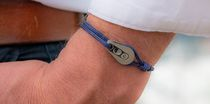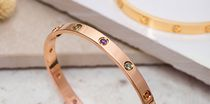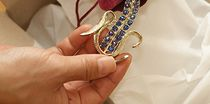Clear all filters
All our Girard Perregaux watches
GIRARD PERREGAUX
0 items
No products found!
Please change Your search criteria and try again. If still not finding anything relevant, please visit the Home page and try out some of our bestsellers!
Girard-Perregaux, origins that go back to the 18th century
After more than two centuries of existence, the House of Girard-Perregaux remains one of the pillars of Swiss high watchmaking. Throughout its history it has distinguished itself by the excellence of its creations, of course, but also by the filing of some 80 patents, from wristwatches for German naval officers in 1880 to the Constant Escapement in 2008. Girard-Perregaux's legacy to the watchmaking world also includes the gold Three-Bridge Tourbillon movement (1884), thanks to which the mechanical part of the watch is an integral part of the design, and the first high-frequency mechanical movement (1966). But let's go back to the origins of this great watchmaking adventure. They date back to 1791, when a young Swiss watchmaker, Jean-François Bautte, created his first watches. In Geneva, this son of laborers quickly gained attention for his extra-flat watches adorned with precious stones. An accomplished businessman, he soon traded with the European courts and established the reputation of his manufacture. Jean-François Bautte's creations dazzled the world's aristocracy in their time, from the future Queen Victoria to the Indian maharajas and the emperors of China. Girard-Perregaux's birthplace, however, is in La Chaux-de-Fonds, in the Swiss Jura, a town that is now a UNESCO World Heritage Site for its "watchmaking urbanism." There, watchmaker Constant Girard founded the Girard-Perregaux factory in 1856. The second name is that of his wife Marie, herself from a watchmaking family.
Technical elements elevated to the rank of works of art
In the canton of Neuchâtel, the Girard-Perregaux manufacture signs watches, but also chronometers whose boldness is matched only by technical precision. The family, too, has ambition. Marie Perregaux's brothers made the manufacture known internationally by setting up shop in America for two of them, in Asia for the third. However, it is to the second generation, embodied by Constant Girard-Gallet, the son, that we owe the birth of the Maison Girard-Perregaux as we know it today, through the purchase, in 1906, of Jean-François Bautte's Geneva House. "This merger," the company writes today on its website, "was the starting point for two centuries of excellence in high watchmaking, combining aesthetics and functionality to reveal the value of time. Girard-Perregaux is indeed the first watchmaking House to have transformed the movements, the technical elements of watches into true works of art. This incredible innovation, for the time, goes to Constant Girard and more precisely to his Tourbillon with three gold bridges, which makes visible the movement parts redesigned in the form of arrows. This design was actually patented in 1884.
Movements that mark the history of watchmaking
This emblematic piece of the House of Girard-Perregaux will call for others over the decades. In La Chaux-de-Fonds, the company defends a global approach to watchmaking. Two factories were actually built, one for movements and watches, the other for bracelets and cases. By designing its own movements, Girard-Perregaux makes its mark on the history of watchmaking. To the collection of high watchmaking movements, Girard-Perregaux has added over the decades a complete range of mechanical self-winding movements that can equip all types of watches. The company even went so far as to create standards: thus in 1970 the first watch equipped with a movement whose quartz vibrates at 32,768 hertz. This frequency is now universally adopted by all manufacturers. It is a fact that Girard-Perregaux has never rested on its laurels, quite the contrary. The House has gone ever further in its creativity, until the presentation of the Constant Escapement in 2008, at the Salon International de la Haute Horlogerie. A flamed silicon blade maintains the oscillations of the balance-spring in a constant manner. It is thinner than a hair! The constant escapement is represented in the Bridges collection, one of Girard-Perregaux's iconic lines.
Girard-Perregaux, creator of iconic watches
"For over two centuries, our watches have done more than indicate the passage of time. They reflect our ability to connect the past and the future, technical mastery and iconic creativity, functionality and aesthetics." The Vintage 1945 watch and its rectangular case variation had already made its mark on luxury watchmaking, soon followed by 1966, a collection of sleek, round mechanical watches with ultra-flat cases inspired by Leonardo da Vinci's phrase, "simplicity is the ultimate sophistication." But it is with Laureato that Girard-Perregaux certainly strikes the biggest blow, aesthetically speaking. Launched in 1975, the watch embodies sporty chic, equipped with its octagonal bezel and integrated steel bracelet. The interplay of straight and curved lines, polished and satin-finished surfaces, and above all the extraordinary versatility of the Laureato, would make it an icon, always reinvented since. The importance of aesthetics is even more pronounced - and logically so - with Cat's Eye, a feminine watch with an oval case launched in 2004. Its various versions are adorned with precious and refined elements, diamonds, mother-of-pearl, aventurine... As for the plum, jasmine or lotus flowers found on certain models, they are hand-painted, making each watch unique.








